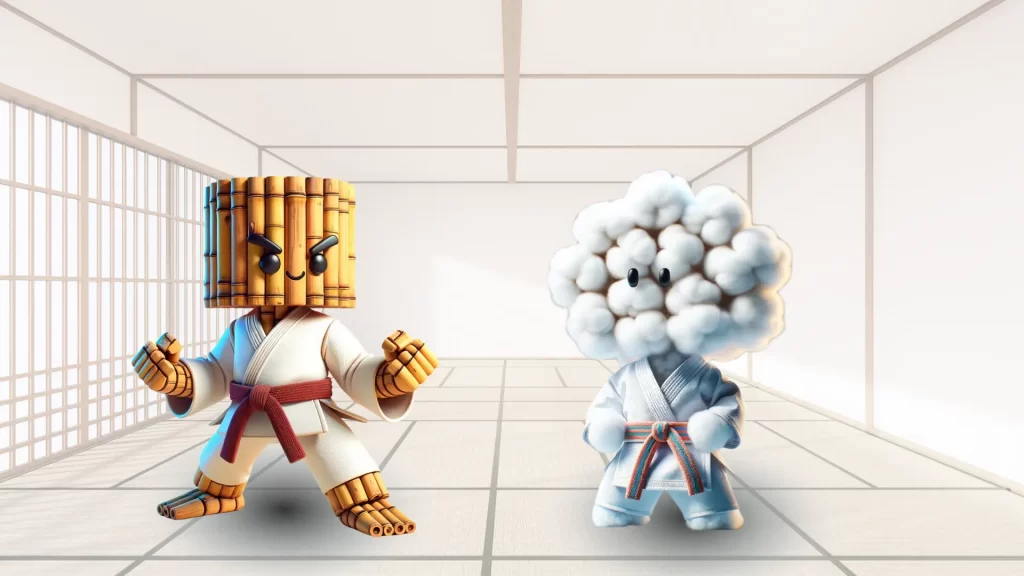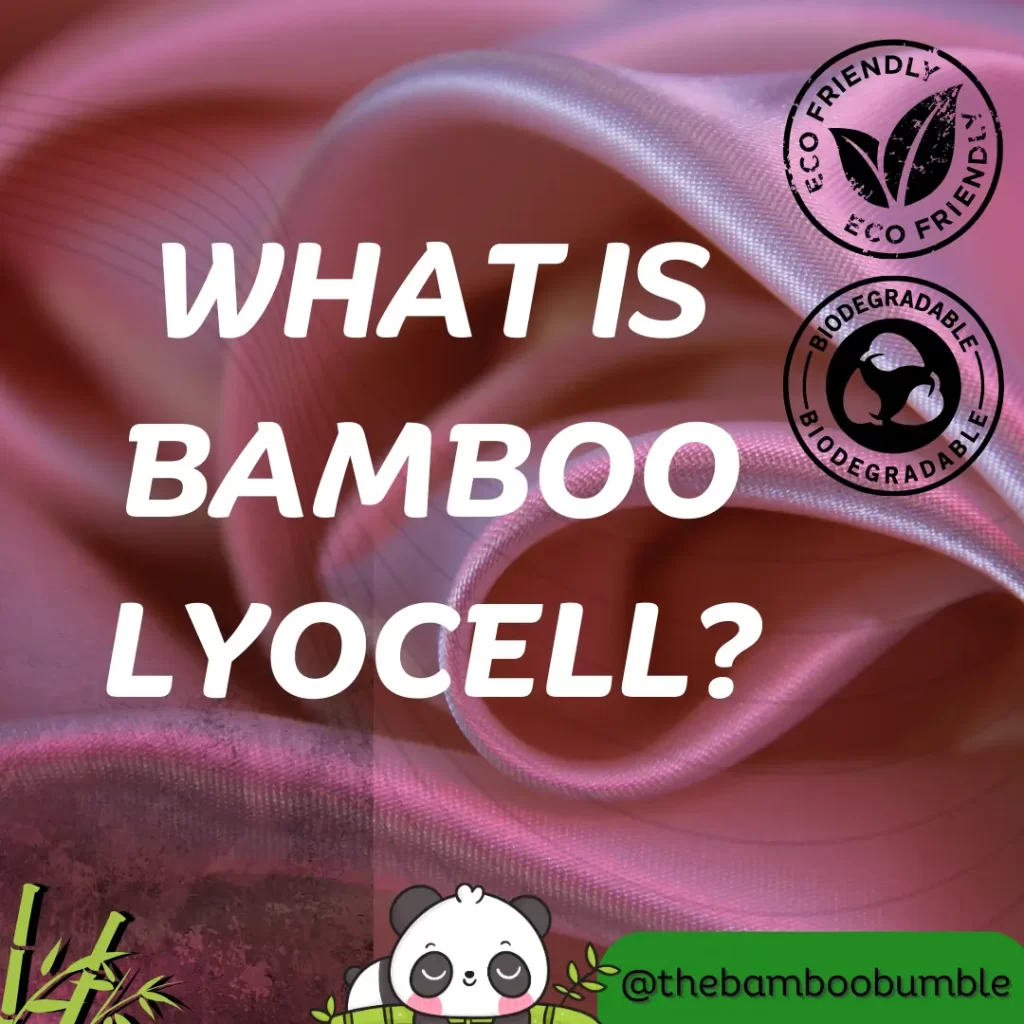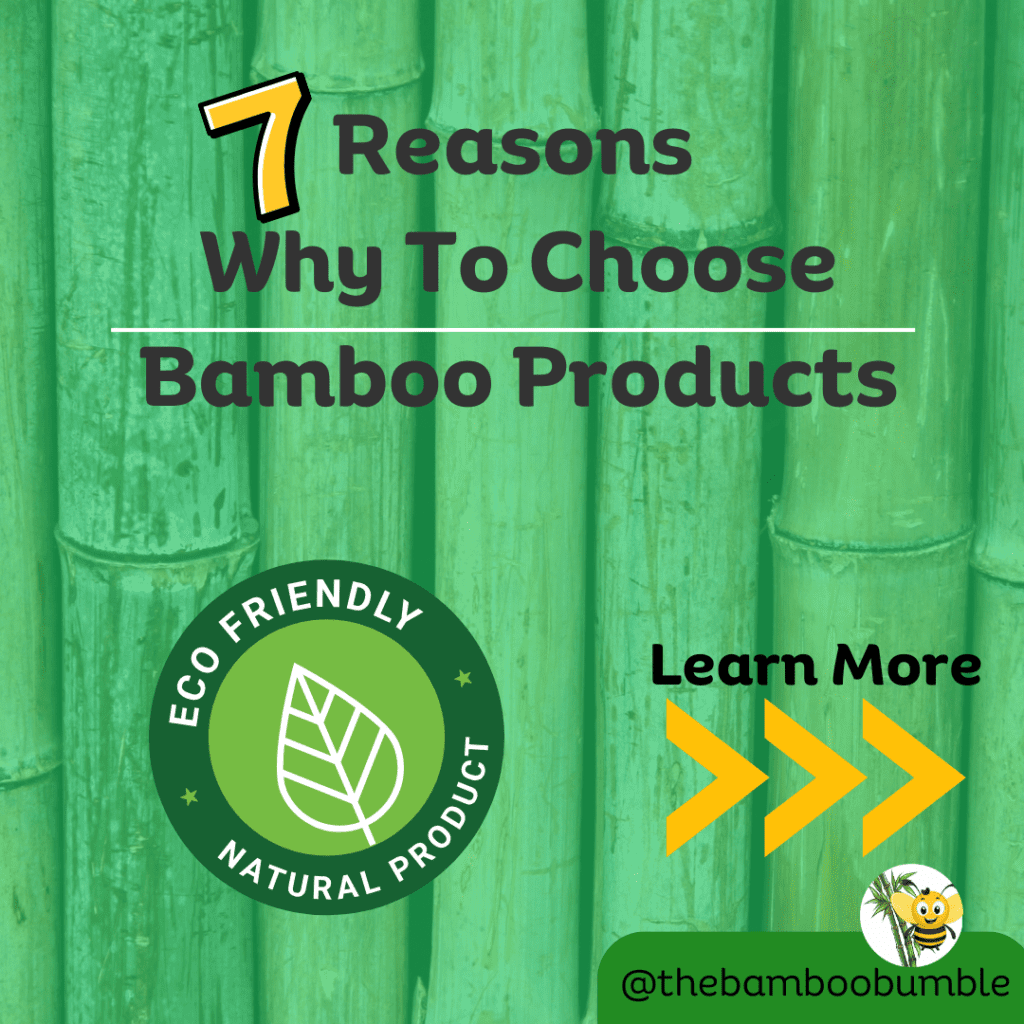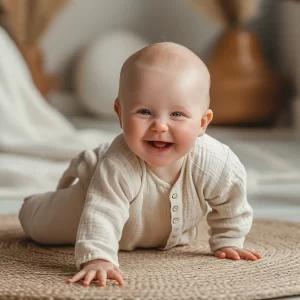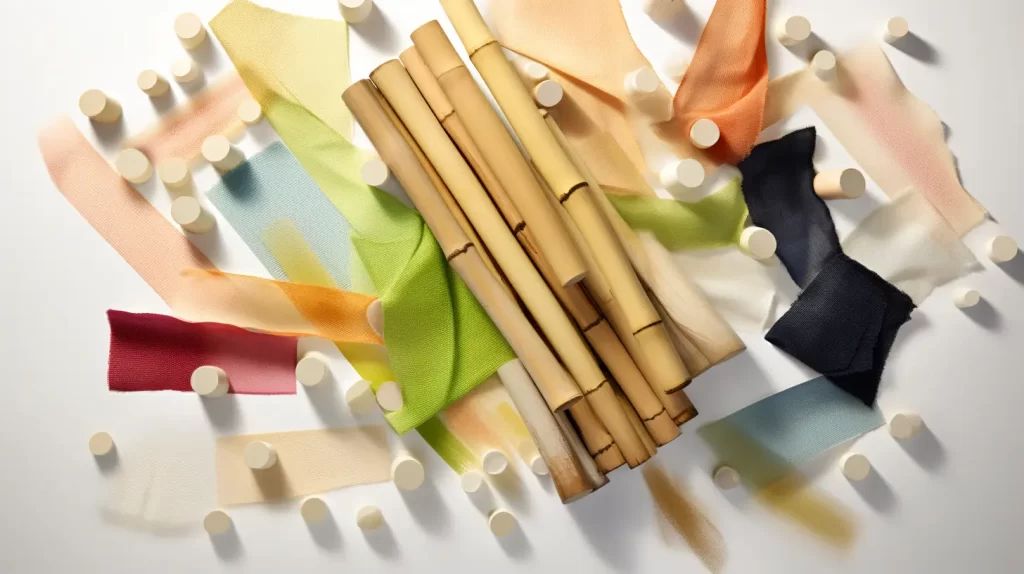
Is Bamboo Fabric Antibacterial? The Truth Revealed
Hey there, bamboo enthusiasts! 🌱 Ever wondered if bamboo fabric is a antibacterial superhero-like many claimed it to be? We’re diving deep into the bamboo jungle to unravel this mystery! Is it a true guardian against germs, or are product descriptions off? Let’s dig in and bring you the real deal on bamboo fabric’s antibacterial capabilities. Ready to embark on this bamboo-adventure with us? Let’s find out if bamboo fabric is genuinely your antibacterial ally or just a myth in disguise!
Table of Contents
Key Takeaways
- Sleuthing the Bamboo Hype: 🕵️♀️ Some bamboo fabric claims might be stretching it a bit! Always play detective with each manufacturer’s claims to truly know what you’re getting.
- Viscose’s Little Secret: 🤫 Shh… here’s the scoop: Viscose bamboo fabric might just be letting go of most of its antibacterial superpowers in the making.
- Lyocell, the Strong Sibling: 💪 Lyocell stands out in the bamboo family, holding onto more of those germ-fighting qualities we love (check your manufacturer).
- Bamboo Kun – The Natural Antimicrobial: 🌱 Bamboo kun is a bio-agent in natural bamboo believed to have antimicrobial properties. However, its retention and effectiveness in processed bamboo fabrics, such as viscose or lyocell, may vary with the manufacturing process.
- Bamboo Charcoal – Beyond Fabric: 🖤 Distinct from bamboo kun, bamboo charcoal, created by carbonizing bamboo, is utilized for its odor-absorbing and purifying qualities, primarily in non-textile applications like air and water filters.
- Bamboo’s Winning Streak: 🏆 Whether it’s viscose or lyocell, these bamboo champs tend to outshine traditional fabrics in the performance ring!
So the answer is….it depends! We’re going to focus on the high points and what to look for, but you should research the manufacturers, look for the properties you care about, and go from there!
Shop Top Bamboo Lyocell Brands!
Introduction: Debunking Bamboo Fabric Myths
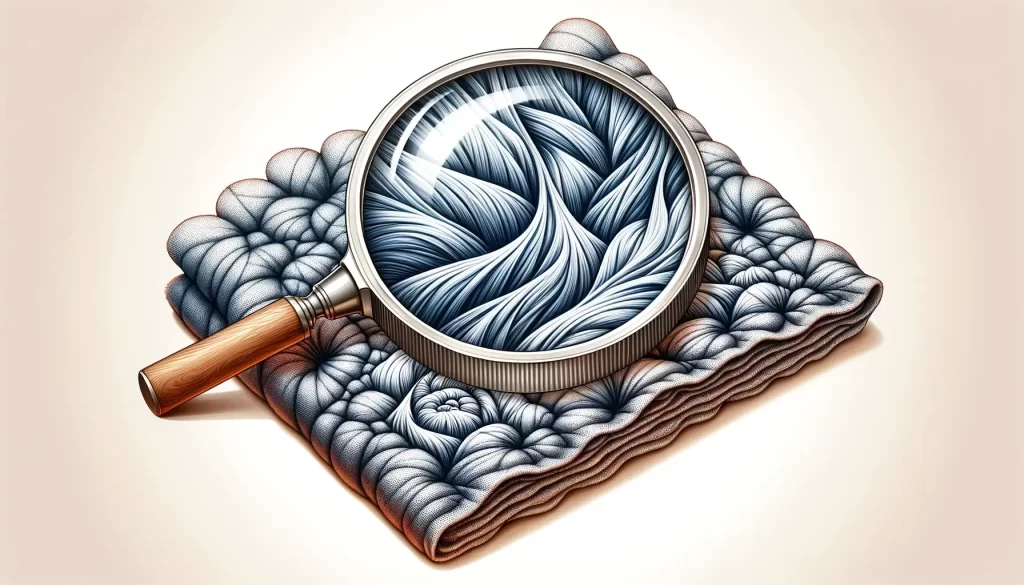
Alright, bamboo fans, we know “it depends” isn’t a great answer, so let’s dive a bit deeper. 🤿 Bamboo fabric’s antibacterial story is more than just surface-level chit-chat. Yes, it’s got its eco-friendly cape on, but when it comes to fighting germs, there’s more than meets the eye. We’ve hinted at some myth-busting truths, and now it’s time to peel back the layers. Lets separate fact from fiction with a sprinkle of science and a dash of reality. Ready to get the full bamboo scoop? Let’s roll!
🌿 🌿 🌿
Brief introduction to the popularity of bamboo fabric
Riding further into the bamboo wave, let’s explore why this fabric is making such a splash in the textile industry. It’s more than just a trend; there’s real substance behind its popularity:
- The Antibacterial Question: Is bamboo fabric truly an antibacterial hero? While it shows promise, not all bamboo fabrics are created equal. The truth lies in the manufacturing process – a critical factor that can make or break its antibacterial prowess.
- Lyocell vs. Viscose Showdown: When it comes to bamboo, Lyocell often takes the lead in retaining antibacterial qualities, outshining its cousin, viscose. But here’s the twist – it really boils down to how each manufacturer spins their fabric magic.
- Eco-Friendly and Sustainable: Bamboo remains an eco-champion. Growing rapidly with minimal water and no pesticides, it’s a sustainability superstar in the fabric world.
- Unmatched Comfort: Beyond its eco-credentials, bamboo fabric is a comfort king. Soft, breathable, and moisture-wicking, it adapts to keep you cozy or cool, making it a favorite for all seasons.
So, what’s the real deal with bamboo fabric’s popularity? It’s a mix of potential antibacterial benefits (with a nod to the savvy manufacturing), sustainability, and undeniable comfort. It’s not just about jumping on the bamboo bandwagon – it’s about understanding the nuances that make this fabric stand out.
🌿 🌿 🌿
Overview of common claims regarding its antibacterial properties
Peeling back the layers of bamboo fabric’s story, we encounter various claims about its antibacterial properties. It’s often touted as the go-to material for health-conscious consumers, with assertions of its natural ability to ward off microbes. Many manufacturers and retailers champion bamboo fabric for its inherent qualities that supposedly resist odor-causing bacteria and repel pests. However, this is where we need to pause and look closer.
While bamboo in its natural state does have properties that discourage pests, the leap to antibacterial prowess in fabric form is not straightforward. The truth is, much of the antimicrobial fame bamboo fabric enjoys comes from chemical treatments applied during manufacturing. These treatments can lend the fabric temporary antibacterial qualities, but there’s a catch – their effectiveness might wane with time and after several washes.
So, as savvy consumers, it’s essential to approach these claims with a critical eye. It’s not just about what bamboo fabric is, but also about how it’s made. Understanding these nuances helps in making informed choices about whether bamboo fabric’s antibacterial claims align with reality or are part of the marketing allure.
In summary, while bamboo fabric holds a certain appeal for its purported antimicrobial properties, discerning the facts from marketing hype is key. Acknowledging the limitations and understanding the role of manufacturing processes in these properties is crucial in evaluating the true benefits of bamboo fabric.
Bamboo Fabric 101: Understanding the Basics
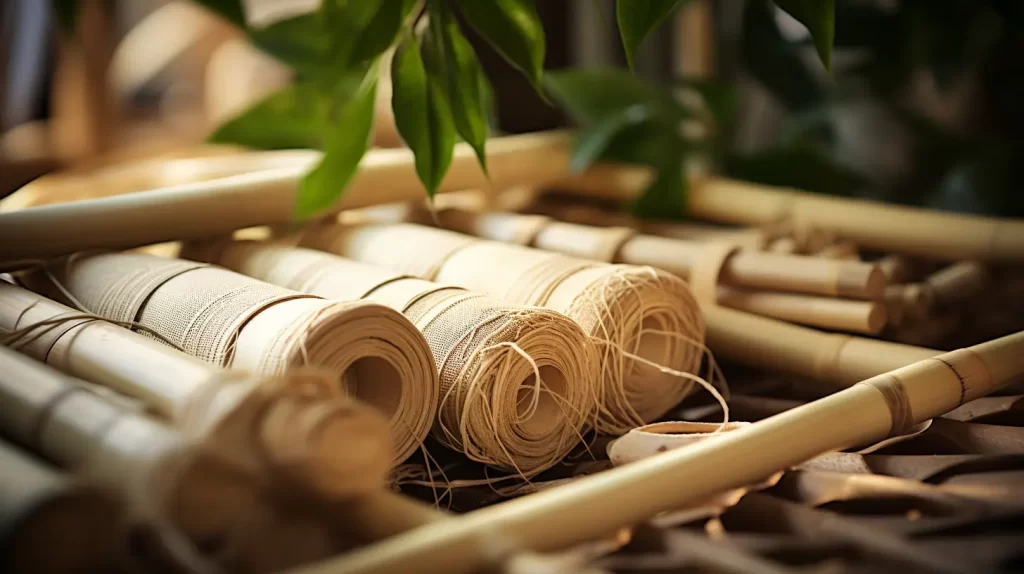
Stepping further into our bamboo journey, let’s zero in on what exactly bamboo fabric is and how it transforms from a humble plant to the trendy fabric we know.
Quick look at what bamboo fabric is and how it’s made
Think of bamboo fabric as nature’s gift that goes through a fascinating metamorphosis. Here’s a brief rundown:
- Harvesting the Green Gold: It all starts in the lush bamboo groves where plants are harvested. Picture this – tall, green stalks ready to begin their journey into the textile world.
- From Plant to Pulp: The harvested bamboo is then crushed, breaking it down to extract the cellulose – the building block for our fabric.
- The Magic of Fiber Transformation: Next, this cellulose is dissolved and magically transformed into fibers through a process that’s part science, part art.
- Weaving Wonders: These fibers are then spun into yarn and woven, creating the bamboo fabric we adore – soft, durable, and with a hint of nature’s charm.
Understanding how bamboo fabric is made not only satisfies our curiosity but also helps us appreciate its unique qualities and potential for antibacterial properties.
Different types: Viscose vs. Lyocell bamboo fabrics
Bamboo fabric comes mainly in two types – Viscose and Lyocell, each unique in its way:
- Viscose – Silky and Smooth: Viscose is known for its ultra-smooth, silk-like texture, making it exceptionally soft to the touch. This fabric is perfect for those who adore the luxurious feel of silk and high-quality cotton.
- Lyocell – Durable and Soft: While Lyocell is also soft, its texture is more akin to a blend of silk and cotton, offering a slightly more substantial feel. What Lyocell brings to the table, aside from its softness, is its enhanced strength and durability, making it a robust yet comfortable choice.
Each type of bamboo fabric, be it the silky-smooth viscose or the durable, soft Lyocell, tells its own story of texture and functionality. Whether it’s the gentle caress of viscose or the resilient comfort of Lyocell, bamboo fabric offers something for everyone.
The Antibacterial Claim: Exploring the Truth
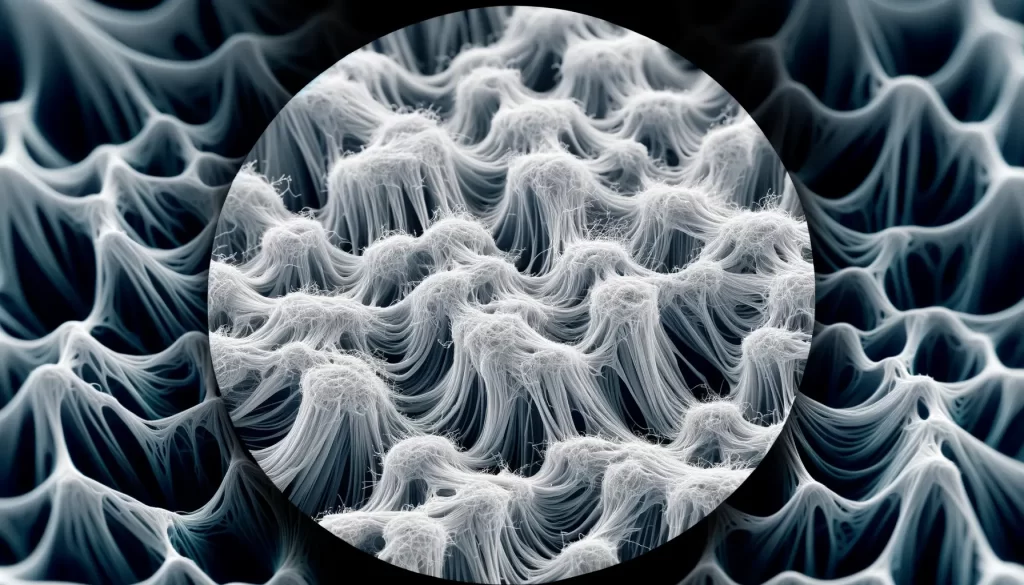

In the realm of bamboo fabric, the debate over its antibacterial claims presents an intriguing mix of established facts and ongoing research. Let’s sift through these claims to uncover the truth, particularly focusing on the differences between viscose and lyocell bamboo fabrics.
Summary of antibacterial claims: What people say vs. what’s proven
- Natural Antibacterial Properties: Many enthusiasts assert that bamboo fabric, particularly in its lyocell form, retains some of the bamboo plant’s natural antibacterial properties. Research supports this to an extent, especially for lyocell, which is processed in a way that is more likely to preserve these properties compared to viscose.
- Hypoallergenic Qualities: While bamboo fabric is often marketed as hypoallergenic and gentle on the skin, this is more attributable to its softness and breathability rather than a proven ability to reduce allergic reactions.
- Resistance to Mold and Mildew: Bamboo fabric, especially lyocell, is believed to have a natural resistance to mold and mildew. However, this doesn’t make it entirely immune, and care is still needed to maintain its quality.
- Temperature Regulation: One of the well-received properties of bamboo fabric is its breathability, which contributes to temperature regulation. This makes it a comfortable choice for various climates, keeping the wearer cool in warmth and vice versa.
- Bamboo Charcoal Integration: Some innovative manufacturers are upping the antibacterial game by infusing bamboo charcoal into their products. Bamboo charcoal, known for its purifying and odor-absorbing qualities, adds an extra layer of antibacterial defense. This not only enhances the fabric’s ability to resist bacteria but also contributes to longer-lasting freshness and reduced odors.
Bamboo kun: A key component in bamboo’s natural antibacterial properties
Bamboo kun is often highlighted as a key factor in bamboo’s natural antibacterial properties. This bio-agent, found in the bamboo plant, is known for its ability to fight bacteria and fungi. In the case of lyocell bamboo fabric, the production process tends to retain more of bamboo kun’s natural properties, thereby enhancing the fabric’s antibacterial potential. Studies have shown that bamboo kun can indeed contribute to the antibacterial effectiveness of bamboo fabric, making it a preferred choice for those seeking these benefits in their textiles.
🌿 🌿 🌿
Science Speaks: What Research Says
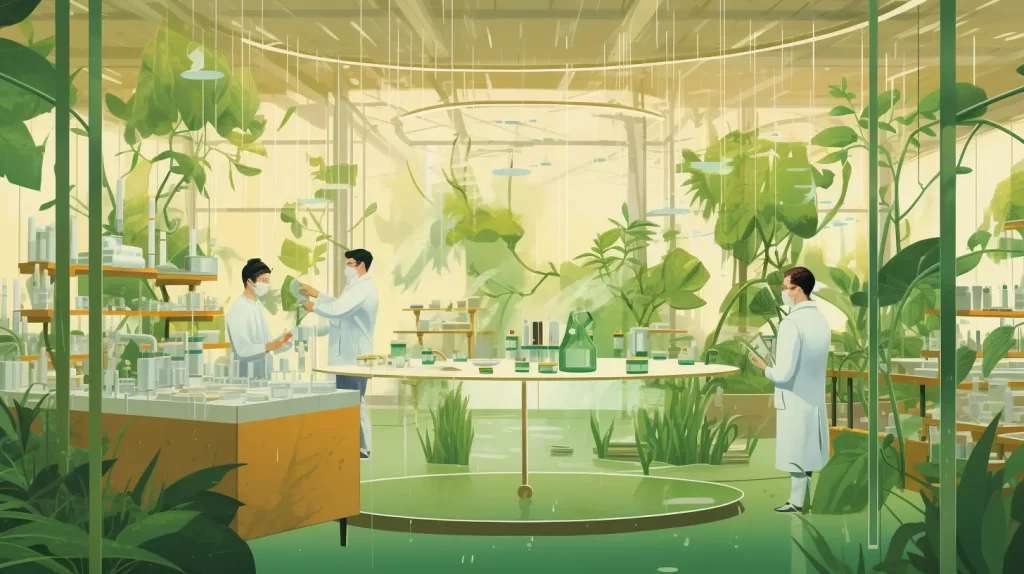

The scientific lens offers a clearer picture of bamboo fabric’s antibacterial prowess. Let’s home in on the fresh perspectives and findings that these studies bring to the table.
Insights from scientific studies on bamboo fabric’s antibacterial efficiency, including the role of bamboo kun
Insights from scientific studies shed light on the antibacterial efficiency of bamboo fabric, specifically focusing on the role of bamboo kun. Bamboo fabric has gained popularity due to its natural antibacterial properties, which have been attributed to the presence of bamboo kun. Here are some key findings from scientific studies:
- Bamboo Kun’s Role Clarified: Research highlights the significance of bamboo kun in bamboo fabric, especially in its natural form. It’s this natural antibacterial agent that gives the fabric an edge against bacteria like E. coli and Staphylococcus aureus.
- Durability of Antibacterial Properties: An encouraging finding is that bamboo fabric, particularly in its less processed forms, retains antibacterial effectiveness even after multiple washes. This durability makes it a practical choice for long-term use.
- Skin-Friendly Benefits: Beyond its antibacterial properties, scientific studies reaffirm bamboo fabric’s gentleness on the skin, underscoring its hypoallergenic and soothing nature.
- Eco-Friendly Fabric: The research also reiterates bamboo fabric’s environmental benefits, derived from the sustainable cultivation practices of bamboo plants.
These scientific insights highlight the antibacterial efficiency of bamboo fabric, emphasizing the role of bamboo kun in providing long-lasting protection and promoting sustainable fashion choices.
Comparison of natural bamboo fiber with processed forms (viscose and lyocell)
When it comes to comparing natural bamboo fiber with its processed counterparts, studies indicate a variance in antibacterial efficacy:
- Natural vs. Processed: The inherent antibacterial properties present in natural bamboo fibers can be diminished in processed forms like viscose and lyocell. This change is attributed to the alterations in fiber structure during chemical processing.
- Lyocell’s Advantage: However, lyocell, thanks to its more eco-friendly production process, often manages to retain more of these antibacterial properties compared to viscose.
In essence, scientific research not only underscores the antibacterial potential of bamboo fabric but also draws attention to the differences brought about by various processing methods. It’s a reminder that while bamboo fabric holds promise, its antibacterial potency can vary based on how it’s produced.
Antibacterial Properties of Bamboo Fabric: Supporting Studies
If you want some bedtime reading (while snuggling in your bamboo bedding), here are some scientific studies that support the antibacterial nature of bamboo fabric.
- Study on Bamboo’s Antibacterial Properties: A study in Japan established that extracts from bamboo shoot skins inhibited the growth of Staphylococcus aureus and Escherichia coli, suggesting potential antibacterial material uses from bamboo in the future. Read more.
- General Information on Bamboo Fabric’s Antibacterial Nature: An article from Ecotero explains how the natural antibacterial property of bamboo, commonly referred to as “Kun,” contributes to the plant’s ability to repel most bacteria, fungi, bugs, and pests. However, it also states that the antibacterial properties of bamboo fabric depend on how the product is made. Read more.
- Antimicrobial Properties of Bamboo Fibers: This article provides an overview of the antimicrobial properties of bamboo fibers. It includes references to various studies and articles that have explored the antibacterial and antimicrobial aspects of bamboo and bamboo-based fabrics. Read more.
- Bamboo Fabric and Microbial Growth: A study mentioned on Robert Owen Undershirts’ website indicates that bamboo viscose and generic viscose fabrics appear to have antimicrobial properties compared to cotton. This suggests that viscose, including bamboo viscose, inhibits bacterial growth, although the superiority of bamboo viscose over other viscose fabrics in this regard is not established. Read more.
There are conflicting studies as well. What it really comes down to is how the bamboo is sourced for your products. As always, dig into the manufactures for you have or intent to buy and verify their claims. See what kind of process they follow, what kinds of certifications they have, and look at the reviews. Draw your own conclusions and find the right bamboo fabric for you!
Beyond the Hype: Real-Life Implications
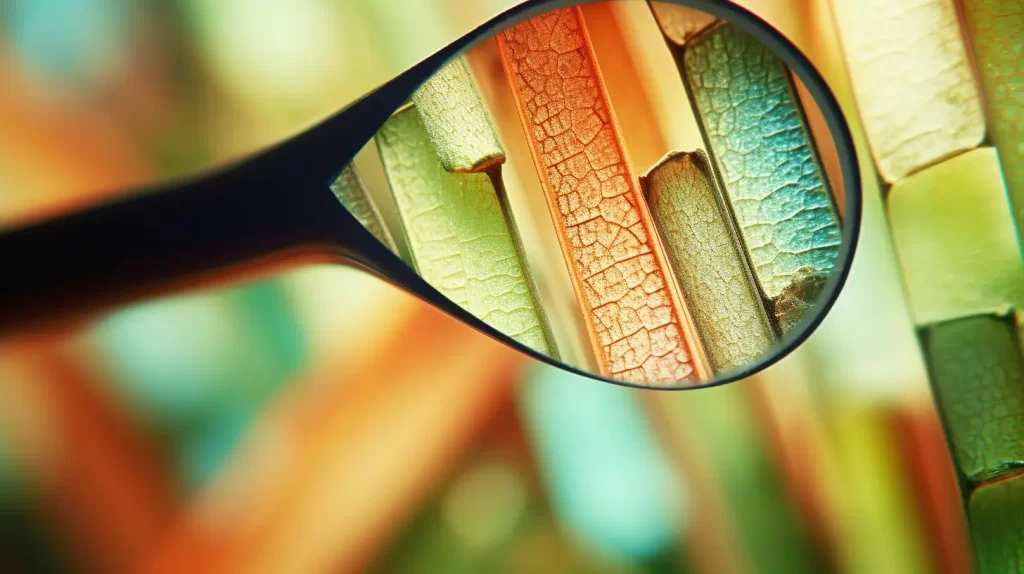

Alright, bamboo squad, we’ve done our homework on the science, but what does it all mean in the real world? Let’s dive into the everyday superhero life of bamboo fabric. Is it really keeping the germs at bay in our clothes and sheets, or is it all just fancy talk? Plus, we’re getting into the nitty-gritty of how bamboo gets its groove – does the journey from plant to fabric, be it viscose or lyocell, keep that antibacterial vibe alive? Let’s unravel these threads!
Practical perspective: Are bamboo products like clothing and bed sheets antibacterial in everyday use
When it comes to real-life, everyday use, bamboo products like clothing and bed sheets are stepping up their game:
- Bacteria Busters: Bamboo fabric’s natural knack for fighting bacteria means your clothes and sheets stay fresher for longer. Think less stink, more style.
- Sensitive Skin’s BFF: If your skin gets cranky easily, bamboo’s gentle, antibacterial touch is like a soothing lullaby, keeping irritations and allergies at bay.
- Hygiene Heroes: These bamboo wonders are all about keeping things clean and hygienic, blocking bacteria build-up and saying goodbye to unwanted odors.
- Eco-Clean: With their bacteria-fighting powers, bamboo products are like mini eco-warriors, reducing the need for frequent washes and harsh chemicals. A win for you and the planet!
Viscose vs. Lyocell: Does the production process affect antibacterial qualities, including the effectiveness of bamboo kun
Now, let’s talk about the bamboo fabric family feud: viscose vs. lyocell.
- Viscose’s Achilles Heel: Viscose, you’re soft and smooth, but when it comes to holding onto those antibacterial powers, you might be losing some muscle. The chemical process you go through can be a bit tough on those natural germ-fighting skills.
- Lyocell, the Eco-Champion: Lyocell, on the other hand, is keeping it green and mean (to germs, that is). Thanks to its eco-friendlier production process, lyocell holds onto more of bamboo’s natural antibacterial mojo, making it the go-to for germ-fighting fierceness.
In the end, it’s all about how bamboo fabric is made. Opting for lyocell might just give you that extra edge in the battle against bacteria. So, when you’re out there making your bamboo picks, remember – the fabric’s journey from plant to product is key to its antibacterial superhero status!
Bamboo and CO2: A Breath of Fresh Air
When it comes to the real-world impact of bamboo products, their role in CO2 emissions and air purification is a standout feature. Let’s leaf through how bamboo makes a difference:
- Carbon Capturing Champion: Bamboo’s rapid growth rate isn’t just about quick harvests; it’s a CO2 gobbling powerhouse. These green giants absorb carbon dioxide from the atmosphere at a remarkable rate, making them efficient natural carbon sinks.
- Oxygen Generation: It’s not all take; bamboo gives back too! In its quest to grow, bamboo releases more oxygen into the air compared to many other plants, contributing to cleaner and healthier air.
- Sustainable Manufacturing: The processing of bamboo into fabrics, while variable in its eco-friendliness, generally has a lower carbon footprint compared to traditional fabric manufacturing. This means the overall CO2 emissions linked to bamboo products tend to be lower, supporting a more sustainable production cycle.
- A Greener Choice: By choosing bamboo products, you’re not just picking a fabric; you’re supporting a cycle that helps in the reduction of CO2 levels. It’s a choice that echoes positively on our planet’s health.
In the bamboo world, it’s not just about antibacterial properties or soft fabrics; it’s about playing a part in a larger environmental story, one where every bamboo product contributes to a greener, cleaner earth.
Conclusion: The Verdict on Bamboo Fabric


As we wrap up our bamboo fabric journey, let’s stitch together the final verdict. Does bamboo fabric truly hold the antibacterial crown it’s often adorned with? The spotlight is on bamboo kun, the natural hero in this tale.
- Bamboo Kun’s Role: The story unfolds with bamboo kun, the plant’s own bio-agent, playing a leading role. It’s this natural warrior that arms bamboo fabric with its antibacterial shield, helping to fend off pesky bacteria and keeping things fresh.
- The Real-World Effect: In everyday life, from snazzy shirts to cozy sheets, bamboo fabric brings its antibacterial A-game. It’s not just about staying clean; it’s about offering a hygienic, less smelly experience, especially for those with sensitive skin.
- Not All Fabrics Are Equal: Here’s the twist – the process matters. Whether it’s the chemically intensive viscose or the greener lyocell, how bamboo fabric is made can dial up or down its antibacterial prowess.
- Eco-Friendly Bonus: By choosing bamboo, you’re not just picking a fabric; you’re rooting for the planet. Bamboo’s rapid growth and carbon-absorbing nature make it an eco-superstar.
So, what’s the final say? Bamboo fabric does live up to its antibacterial claims, with a few caveats. The presence of bamboo kun does give it an edge, but the manufacturing process can influence its effectiveness. While further research could shed more light, for now, bamboo fabric stands tall as a sustainable, antibacterial choice for the eco-conscious and hygiene-minded. It’s a fabric with a mission, blending style with sustainability and cleanliness with comfort.


Bamboo FAQ
Q: Is bamboo fabric really antibacterial?
A: Yes, bamboo fabric does exhibit antibacterial properties, largely thanks to “bamboo kun.” While some research supports these properties, the effectiveness can vary based on the fabric’s processing methods.
Q: What is “bamboo kun” and how does it relate to the antibacterial properties of bamboo fabric?
A: “Bamboo kun” is a natural bio-agent in bamboo, linked to its antibacterial properties. While its presence in bamboo fabric suggests potential antibacterial activity, the impact can vary depending on how the fabric is processed.
Q: Can bamboo fabric help in controlling odor due to its antibacterial properties?
A: Yes, it is often claimed that due to its natural anti-bacterial properties, bamboo fabric can help in controlling odor. The presence of “bamboo kun” is believed to inhibit the growth of bacteria that causes unpleasant odor, which may contribute to the odor-reducing characteristics of bamboo clothing. Additionally, the breathability of the fabric is a great help in odor reduction as well!
Q: Is bamboo fabric made directly from bamboo?
A: It’s a common misconception that bamboo fabric is made directly from the bamboo plant’s natural fibers. In reality, most bamboo fabric, such as bamboo viscose or rayon, is made from bamboo cellulose. The process involves extracting cellulose from the bamboo and then using a chemical process to turn this cellulose into fiber, which is then spun into yarn. So, while bamboo fabric does originate from the bamboo plant, it’s not made from unaltered bamboo fibers but rather from processed bamboo cellulose. This process is similar to how rayon is made from wood pulp.
Q: Are there scientific studies supporting the antibacterial claims about bamboo fabric?
A: Absolutely! While there are conflicting studies, it really comes down to the fabric being studied. There are plenty of studies (some listed above) with evidence supporting that bamboo fabric has natural antibacterial properties, primarily attributed to ‘bamboo kun.’ The effectiveness of these properties in the fabric depends on the manufacturing process. Check your manufacturer!
Q: Does bamboo fabric also have antifungal properties?
A: This is a great question. There is evidence to support that bamboo has antifungal properties and at least some of this capability is retained in the fabric.
Q: Is there evidence to support the natural antibacterial properties of bamboo fabric?
A: Absolutely! While there are conflicting studies, it really comes down to the fabric being studied. There are plenty of studies (some listed above) with evidence supporting that bamboo fabric has natural antibacterial properties, primarily attributed to ‘bamboo kun.’ The effectiveness of these properties in the fabric depends on the manufacturing process. Check your manufacturer!
Q: What are the specific antimicrobial characteristics present in bamboo that contribute to its antibacterial claims?
A: The natural antimicrobial characteristics of bamboo are attributed to the presence of “bamboo kun,” a substance believed to inhibit the growth of bacteria and microorganisms.
Q: What is the truth about the natural antibacterial claim of bamboo fabric?
A: Short answer – it depends. Bamboo fabric does possess natural antibacterial properties. The degree to which these properties are retained in the fabric depends significantly on the manufacturing process.



